Corporate Governance Highlights
At Deere, we recognize that strong corporate governance contributes to long-term shareholder value.
We are committed to sound governance practices, including those described below:
INDEPENDENCE
—All of our director nominees, except our Chairman and CEO, are independent
—The independent Presiding Director has a role with significant governance responsibilities
—All standing Board committees other than the Executive Committee are composed wholly of independent directors
—Independent directors meet regularly in executive session without management present
| | BEST PRACTICES
—Directors may not stand for re-election after their 75th birthday, absent Board approval under rare circumstances
—Our recoupment policy requires an executive to return any incentive compensation found to have been awarded erroneously due to accounting misconduct
—Directors and executives are subject to stock ownership requirements
—Directors and executives are prohibited from hedging or pledging their Deere stock
|
| | |
ACCOUNTABILITY
—All directors are elected annually
—In uncontested elections, directors are elected by majority vote
—The Board and each Board committee conducts an annual performance self-evaluation
—Shareholders have the ability to include nominees in our proxy statement (so-called proxy access rights)
| | RISK OVERSIGHT
—The Board oversees Deere’s overall risk-management structure
—Individual Board committees oversee certain risks related to their specific areas of responsibility
—We have robust risk management processes throughout the company
|
Our Values
At Deere, our actions are guided by our core values: integrity, quality, commitment, and innovation. We strive to live up to these values in everything we do — not just because it is good business, but because we are committed to strong corporate governance. We are committed to strong corporate governance as a means of upholding these values and ensuring that we are accountable to our shareholders.
Director Independence
The Board has adopted categorical standards (see Appendix A) that help us evaluate each director’s independence. Specifically, these standards are intended to assist the Board in determining whether certain relationships between our directors and Deere or its affiliates are “material relationships” for purposes of the New York Stock Exchange (NYSE) independence standards. The categorical standards establish thresholds, short of which any such relationship is deemed not to be material. In addition, each director’s independence is evaluated under our Related Person Transactions Approval Policy, as discussed in the “Review and Approval of Related Person Transactions” section. Deere’s independence standards meet or exceed the NYSE’s independence requirements.
15 | DEERE & COMPANY | 2021 PROXY STATEMENT |
Table of Contents
Election of Directors
Corporate Governance
In November 2020, we reviewed the independence of each then-sitting director, applying the independence standards set forth in our Corporate Governance Policies. The reviews considered relationships and transactions between each director (and the director’s immediate family and affiliates) and Deere, Deere’s management, and Deere’s independent registered public accounting firm. Based on this review, the Board affirmatively determined at its regular December 2020 meeting that no director other than Mr. May has a material relationship with Deere and its affiliates and that each director other than Mr. May is independent as defined in our Corporate Governance Policies and the NYSE’s listing standards. Mr. May is not independent because of his employment relationship with Deere.
Board Leadership Structure
John C. May currently serves as Deere’s Chairman, Chief Executive Officer and President. The position of Chairman has traditionally been held by Deere’s Chief Executive Officer. The Board believes the decisions as to who should serve as Chairman and as Chief Executive Officer and whether the offices shall be combined or separated is the proper responsibility of the Board. The Board also believes that having an independent Chairman is unnecessary in normal circumstances. The Board’s governance processes preserve Board independence by ensuring discussion among independent directors and independent evaluation of and communication with members of senior management. Additionally, the enhanced role of the independent Presiding Director provides a strong counterbalance to the non-independent Chairman and Chief Executive Officer roles.
Presiding Director
Charles O. Holliday, Jr. has served as our independent Presiding Director since the 2020 Annual Meeting.
The Presiding Director is elected by a majority of the independent directors upon a recommendation from the Corporate Governance Committee. The Presiding Director is appointed for a one-year term beginning upon election and expiring upon the selection of a successor.
The Board has assigned the Presiding Director the following duties and responsibilities:
— | Preside at all meetings of the Board at which the Chairman is not present, including executive sessions of the independent directors; |
— | Serve as liaison between the Chairman and the independent directors; |
— | In consultation with the Chairman, review and approve the schedule of meetings of the Board, the proposed agendas, and the materials to be sent to the Board; |
— | Call meetings of the independent directors when necessary; and |
— | Remain available for consultation and direct communication with Deere’s shareholders. |
The Board believes the role of the Presiding Director exemplifies Deere’s continuing commitment to strong corporate governance and Board independence.
Board Meetings
Under Deere’s bylaws, regular meetings of the Board are held at least quarterly. Our typical practice is to schedule at least one Board meeting per year at a company location other than our World Headquarters so directors have an opportunity to observe different aspects of our business first-hand. The Board met four times during fiscal 2020.
Directors are expected to attend Board meetings, meetings of committees on which they serve, and shareholder meetings. More to the point, directors are expected to spend the time needed and meet as frequently as necessary to properly discharge their responsibilities. During fiscal 2020, all incumbent directors attended 75% or more of the meetings of the Board and committees on which they served. Overall attendance at Board and committee meetings was 98%. All directors then in office attended the Annual Meeting of Shareholders in February 2020.
Each Board meeting normally begins or ends with a session between the CEO and the independent directors. This provides a platform for discussions outside the presence of the non-Board management attendees. The independent directors may meet in executive session, without the CEO, at any time, but such non-management executive sessions are scheduled and typically occur at each regular Board meeting. The Presiding Director presides over these executive sessions.
16 | DEERE & COMPANY | 2021 PROXY STATEMENT |
Table of Contents
Election of Directors
Corporate Governance
Board Committees
The Board has delegated some of its authority to five committees: the Executive Committee, the Audit Review Committee, the Compensation Committee, the Corporate Governance Committee, and the Finance Committee.
Periodically, the Board approves the rotation of certain directors’ committee memberships. The Board believes that committee rotation is generally desirable to ensure that committees regularly benefit from new perspectives. Effective November 2020, Dipak C. Jain was appointed to the Compensation Committee and left the Audit Review Committee, and Clayton M. Jones was appointed to the Audit Review Committee and left the Compensation Committee.
Each of our Board committees has adopted a charter that complies with current NYSE rules relating to corporate governance matters. Copies of the committee charters are available at www.JohnDeere.com/corpgov and may also be obtained upon request to the Deere & Company Shareholder Relations Department. Each committee (other than the Executive Committee, which did not meet in 2020 and of which Mr. May serves as chair) is composed solely of independent directors.
The committee structure and memberships described below reflect the changes that become effective in November 2020. Every committee other than the Executive Committee regularly reports on its activities to the full Board.
EXECUTIVE COMMITTEE
2020 meetings: 0
Members:
John C. May (Chair)
Clayton M. Jones
Gregory R. Page
Sherry M. Smith
Dimitri L. Stockton
| | —Acts on matters requiring Board action between meetings of the full Board
—Has authority to act on certain significant matters, limited by our bylaws and applicable law
—All members, other than Mr. May, are independent
|
AUDIT REVIEW COMMITTEE
2020 meetings: 5
Members:
Sherry M. Smith (Chair)
Alan C. Heuberger
Clayton M. Jones
Gregory R. Page
Sheila G. Talton
| | —Oversees the independent registered public accounting firm’s qualifications, independence, and performance
—Assists the Board in overseeing the integrity of our financial statements, compliance with legal requirements, and the performance of our internal auditors
—Pre-approves all audit and allowable non-audit services by the independent registered public accounting firm
—With the assistance of management, approves the selection of the independent registered public accounting firm’s lead engagement partner
—All members have been determined to be independent and financially literate under current NYSE listing standards, including those standards applicable specifically to audit committee members
—The Board has determined that Ms. Smith, Mr. Heuberger, Mr. Jones and Mr. Page are “audit committee financial experts” as defined by the SEC and that each has accounting or related financial management expertise as required by NYSE listing standards
|
17 | DEERE & COMPANY | 2021 PROXY STATEMENT |
Table of Contents
Election of Directors
Corporate Governance
COMPENSATION COMMITTEE
2020 meetings: 5
Members:
Dimitri L. Stockton (Chair)
Tamra A. Erwin
Charles O. Holliday, Jr.
Dipak C. Jain
Michael O. Johanns
| | —Makes recommendations to the Board regarding incentive and equity-based compensation plans
—Evaluates and approves the compensation of our executive officers (except for the compensation of our CEO, which is approved by the full Board), including reviewing and approving the performance goals and objectives that will affect that compensation
—Evaluates and approves compensation granted pursuant to Deere’s equity-based and incentive compensation plans, policies, and programs
—Retains, oversees, and assesses the independence of compensation consultants and other advisors
—Oversees our policies on structuring compensation programs for executive officers relative to tax deductibility
—Reviews and discusses the CD&A with management and determines whether to recommend to the Board that the CD&A be included in our filings with the SEC
—All members have been determined to be independent under current NYSE listing standards, including those standards applicable specifically to compensation committee members
|
CORPORATE GOVERNANCE
COMMITTEE
2020 meetings: 4
Members:
Clayton M. Jones (Chair)
Tamra A. Erwin
Charles O. Holliday, Jr.
Michael O. Johanns
Sheila G. Talton
| | —Monitors corporate governance policies and oversees our Center for Global Business Conduct
—Reviews senior management succession plans and identifies and recommends to the Board individuals to be nominated as directors
—Makes recommendations concerning the size, composition, committee structure, and fees for the Board
—Reviews and reports to the Board on the performance and effectiveness of the Board
—Oversees the evaluation of our management
—Monitors and oversees aspirations and activities related to environmental, social, and governance matters
—All members have been determined to be independent under current NYSE listing standards
|
FINANCE COMMITTEE
2020 meetings: 4
Members:
Gregory R. Page (Chair)
Alan C. Heuberger
Dipak C. Jain
Sherry M. Smith
Dmitri L. Stockton
| | —Reviews the policies, practices, strategies, and risks relating to Deere’s financial affairs
—Exercises oversight of the business of Deere’s Financial Services segment
—Formulates our pension funding policies
—Oversees our pension plans
—All members have been determined to be independent under current NYSE listing standards
|
18 | DEERE & COMPANY | 2021 PROXY STATEMENT |
Table of Contents
Election of Directors
Corporate Governance
Board Oversight of Risk Management
The Board believes that strong and effective internal controls and risk management processes are essential for achieving long-term shareholder value. The Board, directly and through its committees, is responsible for monitoring risks that may affect Deere.
RISK MANAGEMENT APPROACH
We maintain a structured risk management approach to facilitate our strategic business objectives. To that end, we identify and categorize risks and then escalate them as needed. Our internal risk management structure is administered by a Management Risk Committee consisting of the CEO and his direct reports. This committee provides periodic reports to the Board regarding Deere’s risk management processes and reviews with the Board high-priority areas of enterprise risk.
Dedicated risk management reports typically take place at regularly scheduled Board meetings, and risk management topics are discussed as needed at other Board and committee meetings.
BOARD AND COMMITTEE RISK OVERSIGHT RESPONSIBILITIES
Each Board committee is responsible for oversight of risk categories related to its specific area of focus, while the full Board exercises ultimate responsibility for overseeing the risk management function as a whole and has direct oversight responsibility for many risk categories, including cyber security risks.
The areas of risk oversight exercised by the Board and its committees are:
Who is responsible? | | Primary areas of risk oversight
|
Full Board | | Oversees overall risk management function and regularly receives and evaluates reports and presentations from the chairs of the individual Board committees on risk-related matters falling within each committee’s oversight responsibilities. |
Audit Review Committee | | Monitors operational, strategic, and legal and regulatory risks by regularly reviewing reports and presentations given by management, including our Senior Vice President and General Counsel, Senior Vice President and Chief Financial Officer, and Vice President, Internal Audit, as well as other operational personnel.
Regularly reviews our risk management practices and risk-related policies (for example, Deere’s risk management and insurance portfolio, and legal and regulatory reviews, evaluates potential risks related to internal control over financial reporting and information system risks, and shares with the full Board oversight responsibility for cyber security risks).
|
Compensation Committee | | Monitors potential risks related to the design and administration of our compensation plans, policies, and programs, including our performance-based compensation programs, to promote appropriate incentives that do not encourage executive officers or employees to take unnecessary and/or excessive risks. |
Corporate Governance Committee | | Monitors potential risks related to our governance practices by, among other things, reviewing succession plans and performance evaluations of the Board and CEO, monitoring legal developments and trends regarding corporate governance practices, monitoring the Code of Business Conduct, and evaluating potential related person transactions.
Monitors product safety and other compliance matters.
|
Finance Committee | | Monitors operational and strategic risks related to Deere’s financial affairs, including capital structure and liquidity risks, and reviews the policies and strategies for managing financial exposure and contingent liabilities.
Monitors potential risks related to funding our U.S. qualified pension plans (other than the defined contribution savings and investment plans) and monitors compliance with applicable laws and internal policies and objectives.
|
19 | DEERE & COMPANY | 2021 PROXY STATEMENT |
Table of Contents
Election of Directors
Corporate Governance
Shareholder Outreach
To ensure the continued delivery of sustainable, long-term value to our shareholders, we engage in regular dialogue with them. During 2020, we discussed governance, executive compensation, sustainability, and other issues with shareholders representing more than 40% of our outstanding shares. The Board considers feedback from these conversations during its deliberations, and we regularly review and adjust our corporate governance structure and executive compensation policies and practices in response to comments from our shareholders.
Communication with the Board
If you wish to communicate with the Board, you may send correspondence to: Corporate Secretary, Deere & Company, One John Deere Place, Moline, Illinois 61265-8098. The Corporate Secretary will submit your correspondence to the Board or the appropriate committee, as applicable.
You may communicate directly with the Presiding Director by sending correspondence to: Presiding Director, Board of Directors, Deere & Company, Department A, One John Deere Place, Moline, Illinois 61265-8098.
Corporate Governance Policies
Because we believe corporate governance is integral to creating long-term shareholder value, our Board of Directors has adopted company-wide Corporate Governance Policies, which are periodically reviewed and revised as appropriate to ensure that they reflect the Board’s corporate governance objectives.
Please visit the Corporate Governance section of our website (www.JohnDeere.com/corpgov) to learn more about our corporate governance practices and to access the following materials:
— | Leadership Biographies |
— | Core Values |
— | Code of Ethics |
— | Corporate Governance Policies |
— | Charters for our Board Committees |
— | Code of Business Conduct |
— | Supplier Code of Conduct |
— | Support of Human Rights in Our Business Practices |
— | Conflict Minerals Policy |
Political Contributions
To promote transparency and good corporate citizenship we have provided voluntary disclosure relating to the political contributions of Deere and its political action committee. This information is publicly available at www.JohnDeere.com/politicalcontributions.
20 | DEERE & COMPANY | 2021 PROXY STATEMENT |
Table of Contents
Election of Directors
Compensation of Directors
Compensation of Directors |
We have structured the compensation of our non-employeenonemployee directors with the following objectives in mind:
— |  Recognize the substantial investment of time and expertise necessary for the directors to discharge their duties to oversee Deere’s global affairs Recognize the substantial investment of time and expertise necessary for the directors to discharge their duties to oversee Deere’s global affairs
|
— | |  Align the directors’ interests Align the directors’ interests
with the long-term interests of
our shareholders
|
— | |  Ensure that compensation is easy to understand and is regarded positively by our shareholders and employees Ensure that compensation is easy to understand and is regarded positively by our shareholders and employees
|
We pay non-employeenonemployee directors an annual retainer. In addition, committee chairpersonschairs and the Presiding Director receive fees for assumingperforming those responsibilities. Directors who are employees receive no additional compensation for serving on the Board. We do not pay committee member retainers or meeting fees, but wefees. We do reimburse directors for expenses related to meeting attendance.
To supplement their cash compensation and align their interests with those of our shareholders, non-employeenonemployee directors are awarded restricted stock units (RSUs)(“RSUs”) after each Annual Meeting. A person who serves a partial term as a non-employeenonemployee director will receive a prorated retainer and a prorated RSU award.
Compensation for non-employeenonemployee directors is reviewed annuallyevery year by the Corporate Governance Committee. Management reviews trends in director compensation and data regarding the amounts and types of compensation paid to nonemployee directors at the companies in Deere’s compensation peer group and presents this information to the Corporate Governance Committee. All decisions regarding nonemployee director compensation are recommended by the Corporate Governance Committee and approved by the Board.
At its December 2018August 2022 meeting, the Board approved compensation as noted below for non-employeenonemployee directors as recommended by the Corporate Governance Committee. The cash components are effective on January 1 following approval and the equity component isboth became effective in October 2022. The Corporate Governance Committee reviewed compensation for the annual awardnonemployee directors in March following approval.
August 2023 and did not recommend any changes. The following chart describes amounts we pay and the value of awards we grant to non-employeenonemployee directors:
Date Approved by Corporate Governance Committee:
Effective Date of Annual Amounts: | | December 2018
January & March 2019 | |
| | | | |
| | | | |
Date Approved by the Board | | | | August 2022 |
Effective Date of the Annual Amounts | | | | October 2022 |
| Retainer | | $ | 135,000 | | $ | 140,000 |
| Equity Award | | $ | 160,000 | | $ | 165,000 |
| Presiding Director Fee | | $ | 30,000 | | $ | 40,000 |
| Audit Review Committee Chair Fee | | $ | 25,000 | | $ | 25,000 |
| Compensation Committee Chair Fee | | $ | 20,000 | | $ | 25,000 |
| Corporate Governance Committee Chair Fee | | $ | 15,000 | | $ | 20,000 |
| Finance Committee Chair Fee | | $ | 15,000 | | $ | 15,000 |
Under our Non-employeeNonemployee Director Deferred Compensation Plan, directors may choose to defer some or all of their annual retainers until they retire from the Board. For deferrals through December 2016, a director could elect to have these deferrals invested in either an interest-bearing account or an account with a return equivalent to an investment in Deere common stock. For deferrals effective in January 2017 and later, directors may choose from a list of investment options, none of which yields an above-market earnings rate.
|
STOCK OWNERSHIP
REQUIREMENT 5X DIRECTOR’S ANNUAL
CASH RETAINER |
Our stock ownership guidelines require each non-employeenonemployee director to own Deere common stock equivalent in value to at least threefive times the director’s annual cash retainer. This ownership level must be achieved within five years of the date the director joins the Board. Restricted shares (regularly granted to non-employeenonemployee directors prior to 2008), RSUs, and any common stock held personally by the non-employeenonemployee director are included in determining whether the applicable ownership threshold has been reached. Each non-employeenonemployee director except Ms. Erwin, who was appointed on May 1, 2020, has achieved stockholdings in excess of the applicable multiple as of the date of this Proxy Statement.Statement or is within the five-year compliance period.
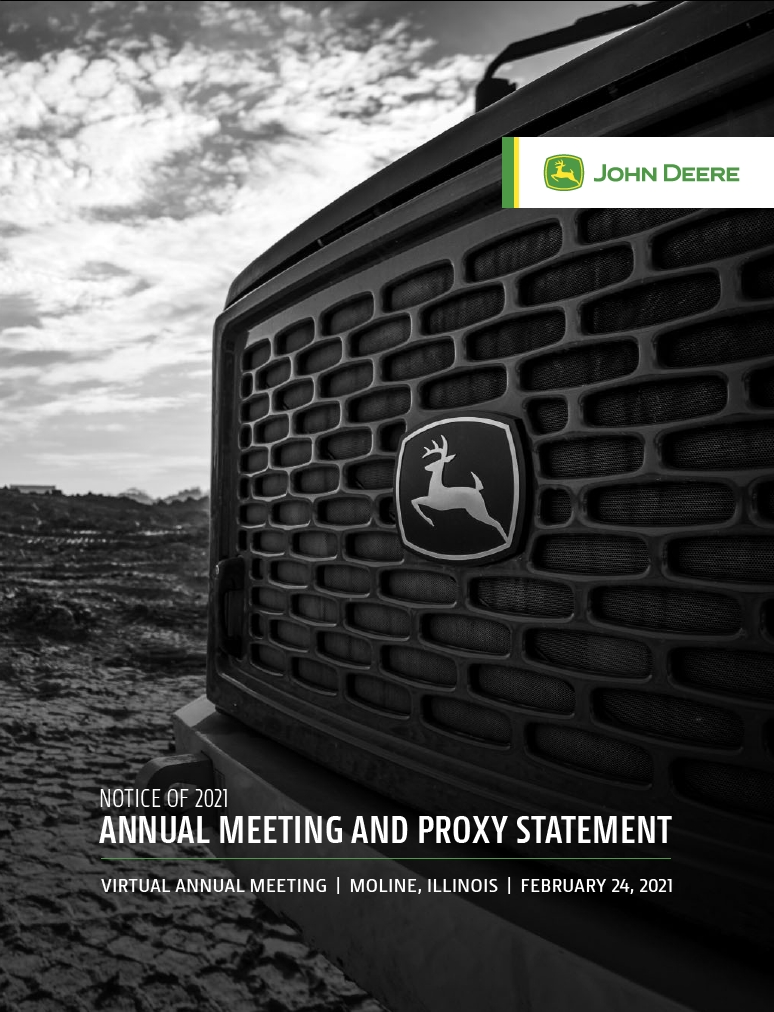
































































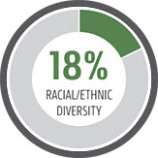














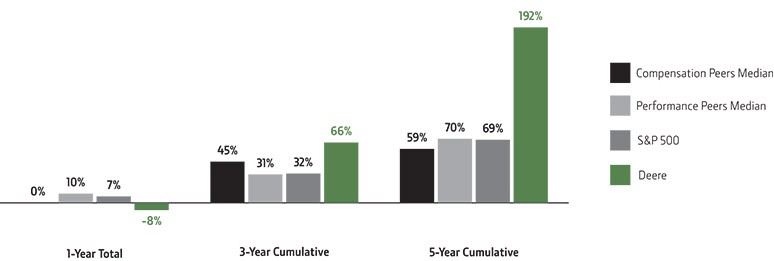

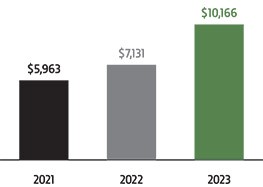
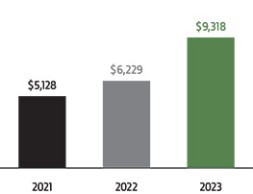


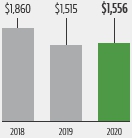


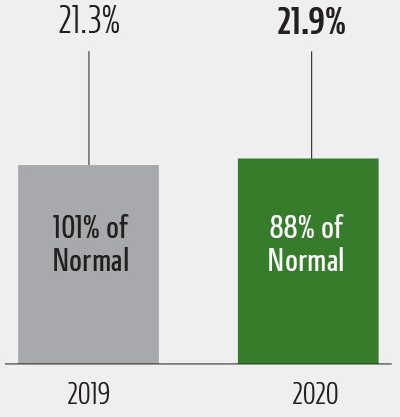

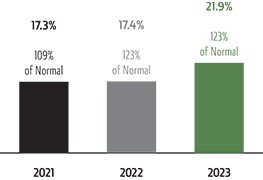
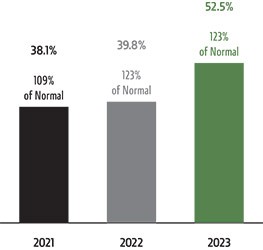
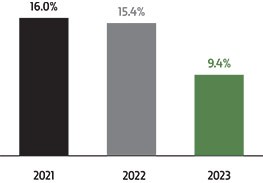
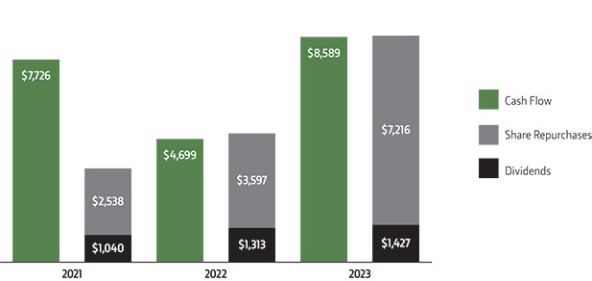




































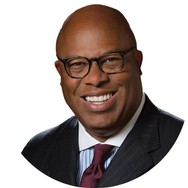





































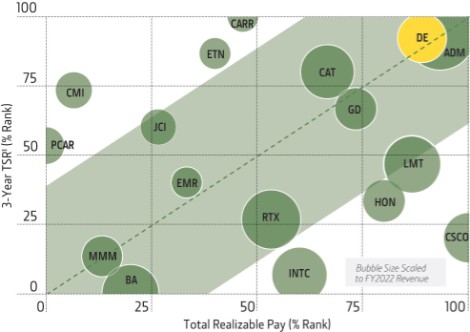


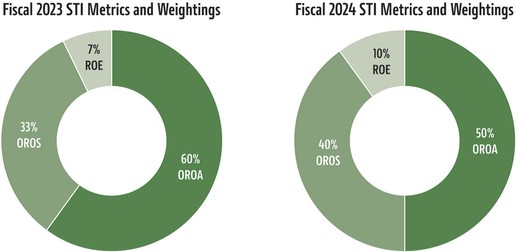
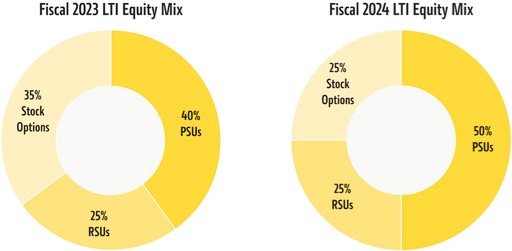


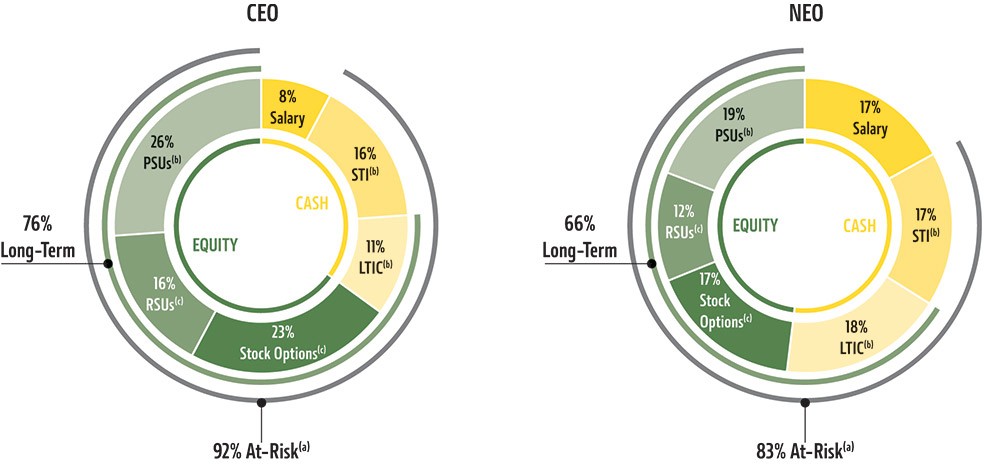


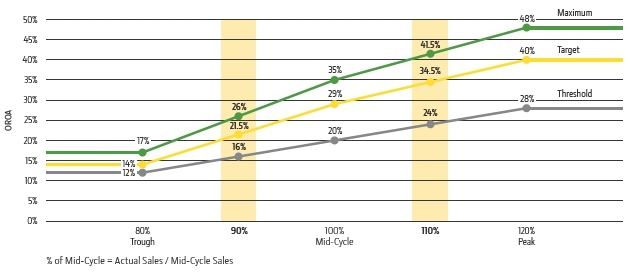

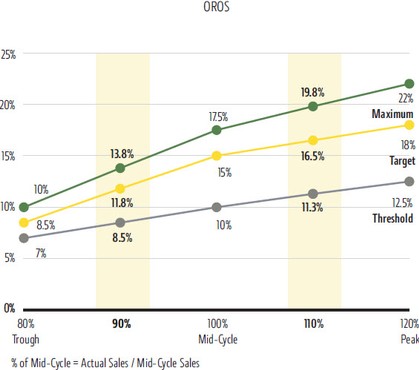
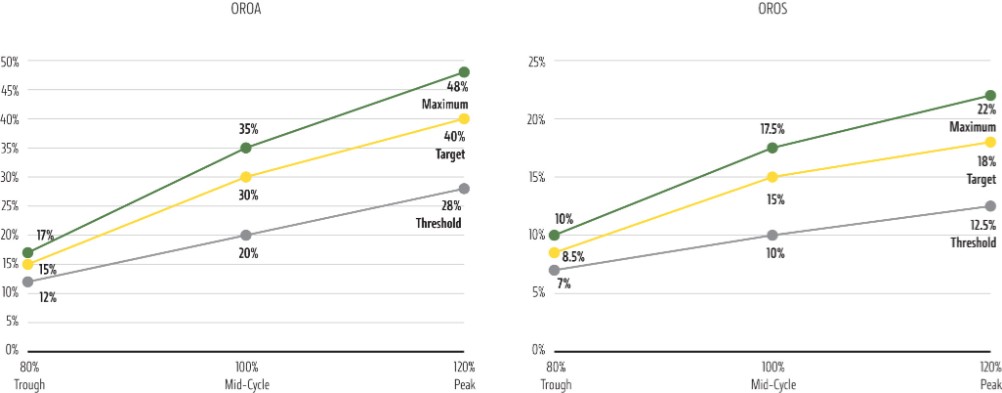
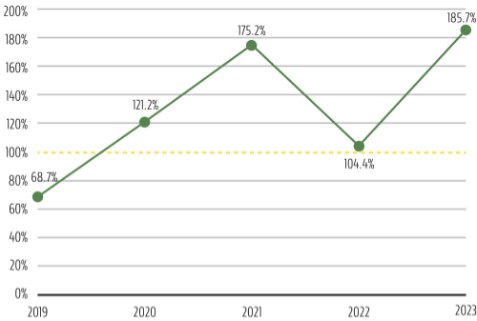


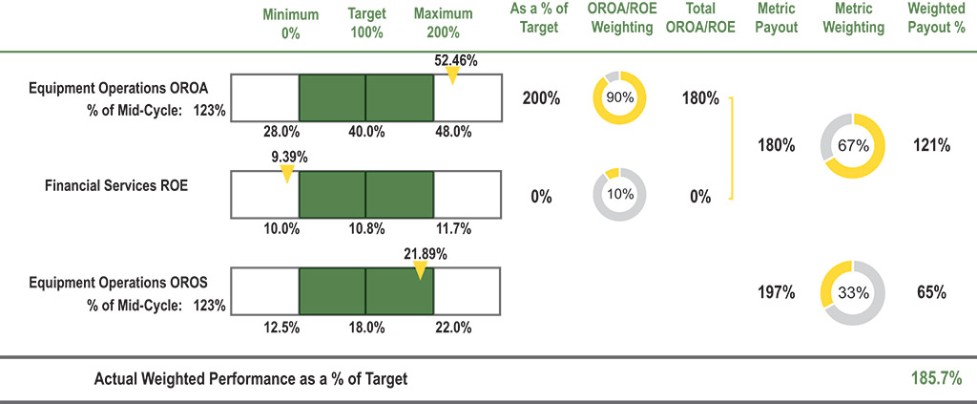










 Consideration of the
Consideration of the 
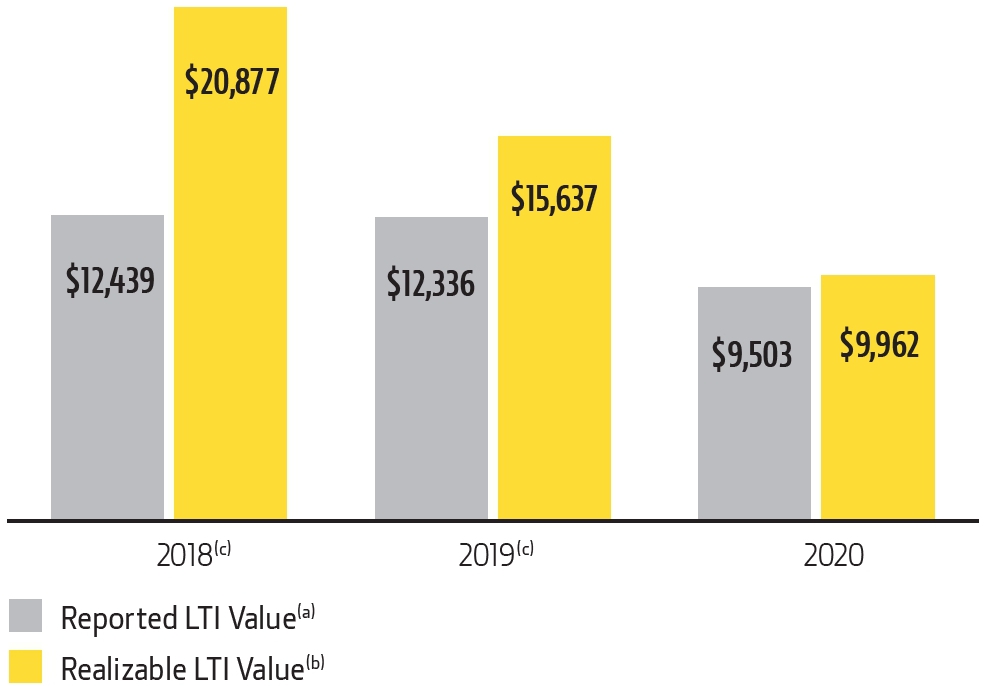
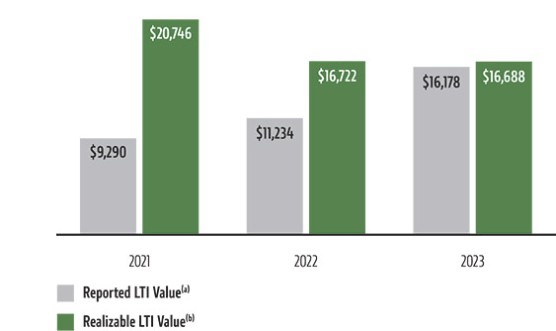

































 Visit the Investor Relations section of our website at
Visit the Investor Relations section of our website at  Write to our Shareholder Relations Department at One John Deere Place, Moline, Illinois 61265-8098.
Write to our Shareholder Relations Department at One John Deere Place, Moline, Illinois 61265-8098. Search the SEC’s EDGAR database at
Search the SEC’s EDGAR database at 







